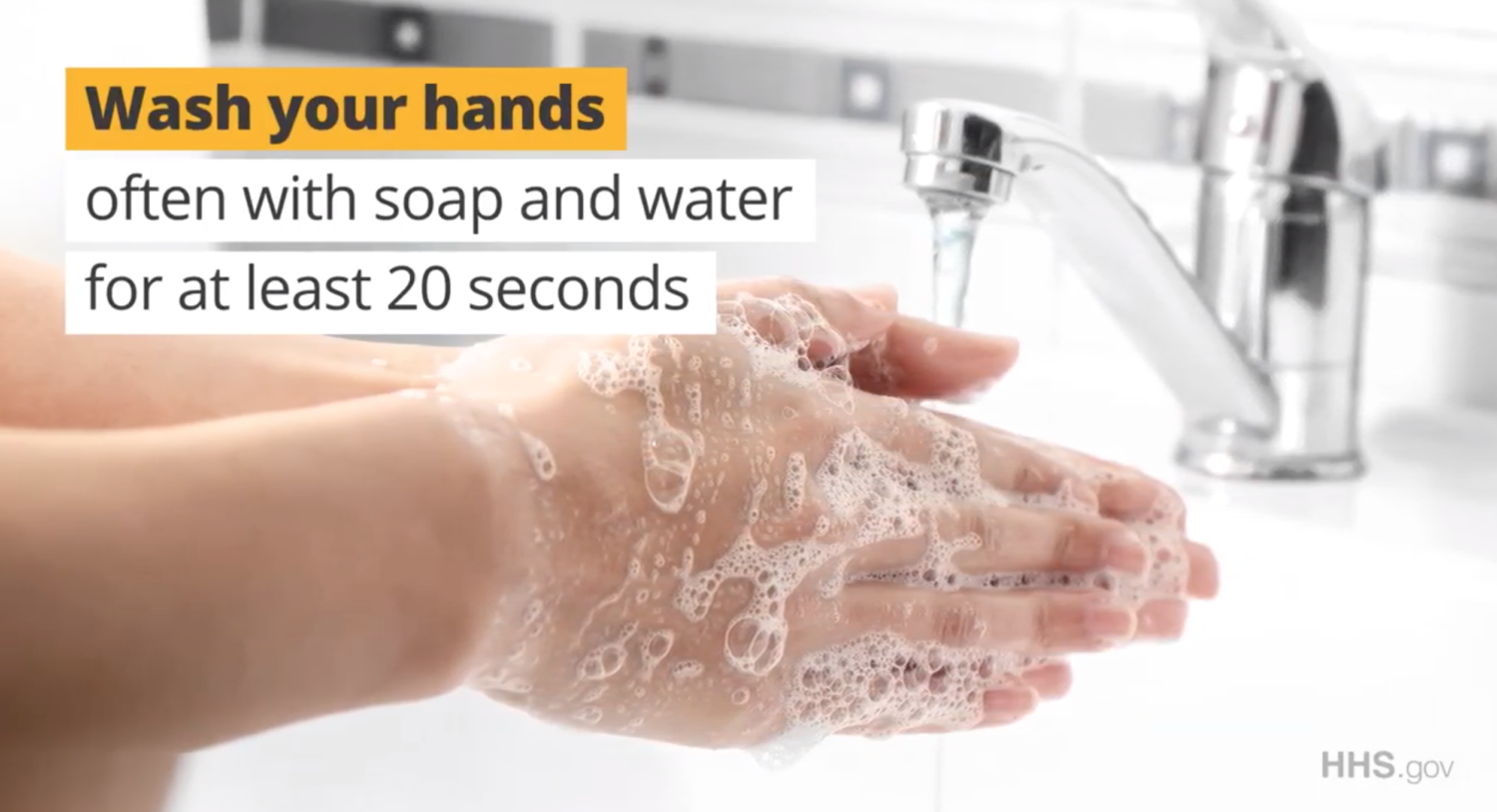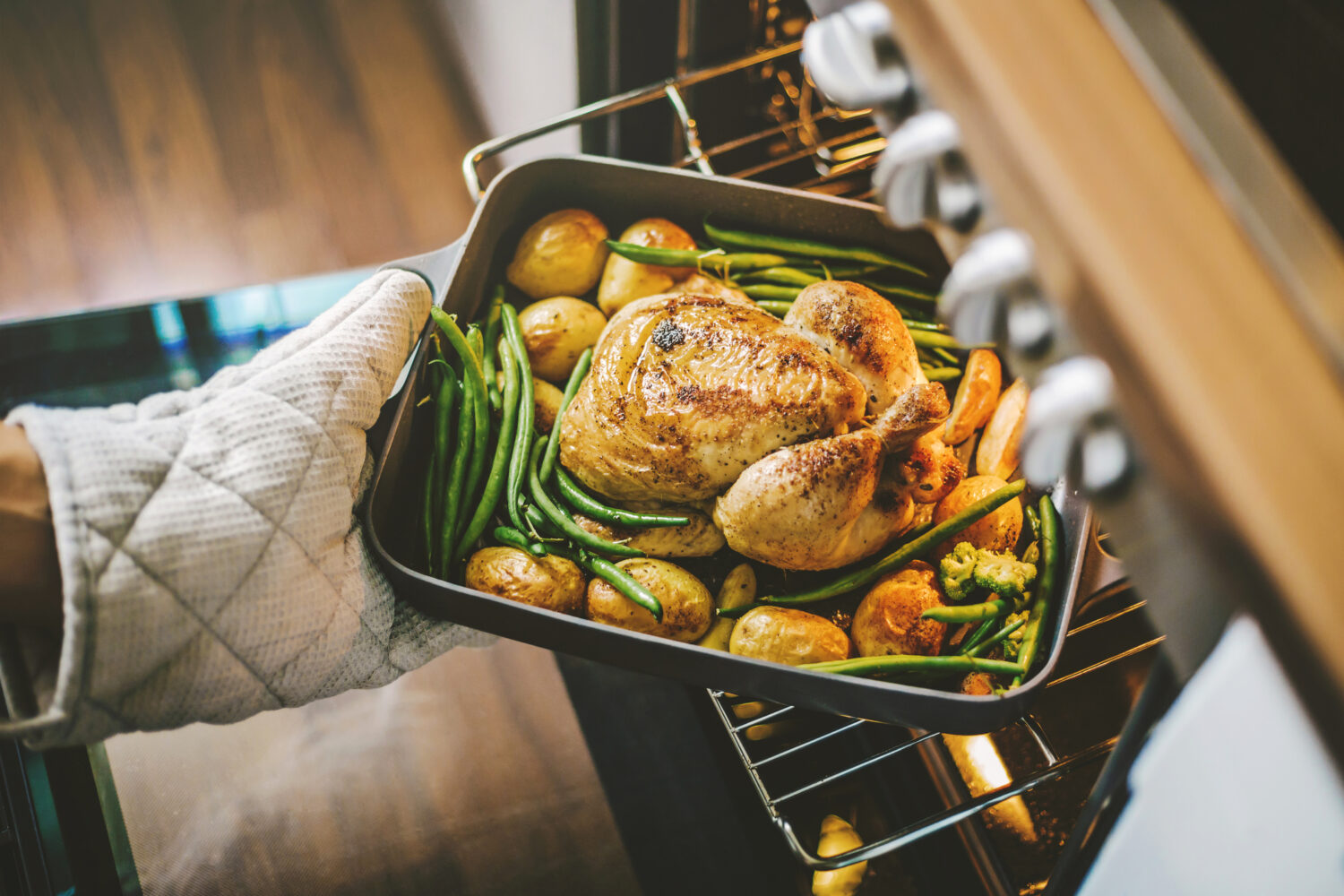Pre-Party Prep
Tis the season to start thinking about your holiday gift list, decorations, and menu, if you haven’t already. But that should also include a food safety plan. NCC’s Chicken Check In blog this week focused on food safety tips for healthy and happy holidays.
The original post on Chicken Check In can be found here.
Chances are, you’re either cooking a holiday meal or going to a gathering this season, and that means you can contribute to handling food safely—whether you’re the host or a guest.
A clean kitchen and strategic shopping can go a long way in setting you up for a successful holiday celebration. See how a solid food safety foundation begins even before you start cooking.
The Kitchen
- Clean the sink, countertops, cutting boards, pans and cooking utensils with hot water and soap.
- Sanitize your meat thermometer and calibrate as needed.
- Confirm your refrigerator is set to 40°F or less, and your freezer is 0°F.
- Have extra clean towels ready for meal prep and clean-up.
Shopping Smarts
- Get refrigerated or frozen items, such as meat and dairy, last.
- Place meat packages in plastic bags provided by the store, and separate meat from other goods.
- Refrigerate perishable food within 2 hours, or 1 hour if it is 90°F or hotter.
Now let’s look closer at perfecting your chef food safety skills when making the holiday meal!
Cook with Confidence
The inside color of poultry is not an accurate indicator of doneness. That’s why it’s so important to use a meat thermometer and cook to 165°F to know you’ve decked the holiday table with a quality meal that will leave your family and friends feeling satisfied days after the feast. We’ve got you covered with the following other food safety techniques below.
Rinsing Poultry = Getting in Deep Water
What’s the big deal with rinsing raw meat? For starters, uncooked poultry isn’t the same as fresh fruits and veggies—dousing meat under water doesn’t help remove potential bacteria, but rather spreads it around your kitchen. A U.S. Department of Agriculture (USDA) study shows how washing poultry increases your chances of getting sick from contaminated materials all over your sink, countertop, nearby dishware and food. In fact, federal agencies have advised against washing poultry since 2005!
Curious what rinsing raw chicken would look like if germs were easily visible? We can show you! Watch our TikTok to see why you should never, ever wash poultry.
The Most-Wanted Meat Thermometer Number
Once you’ve thawed your meat in the fridge or microwave, simply pop poultry in your cooking device of choice to properly heat it! How do you know you’ve reached the safely cooked zone? By using a meat thermometer to double-check that your chicken has reached 165°F. This is the minimum temperature that will ensure your meal is completely safe to eat for maximum enjoyment.
What’s more, cooking poultry to at least 165°F is the lowest temperature an angel will bless. See how this particular angel is looking out for you:
Party Time Pointers
Even when your kitchen is host-worthy and you’ve cooked your feast, keep hot foods heated to at least 140°F, and cold foods colder than 40°F to prevent bacteria from multiplying quickly. Another simple, yet effective food safety practice is setting out hand sanitizer at the front of the serving line.

Going to a holiday celebration?
Just because you’re at a party doesn’t mean you’re off the hook from hand washing! Washing your hands at least 20 seconds before and after handling food is a favor to you, as well as other guests. And though some parties can last all night, avoid food that has sat at room temperature for two hours. Or better yet, offer to chip in with clean-up around the 2-hour mark.
Handling Leftovers
If there happen to be any holiday leftovers at all, they are almost as great as the original feast. You simply reheat and eat, right? But don’t become too lax. Before digging in, reheat poultry to 165°F and make note of the following storage guidelines:

Source: FoodSafety.gov
Farm to Fork Food Safety
Do you realize just how committed the U.S. chicken industry is to ensuring you purchase the highest quality protein, even weeks before you enjoy your meal? Navigate our interactive infographic, Food Safety from Farm to Fork, to explore how the highest standards of care are implemented, from the hatchery to the grocery store.
Most of all, we wish you and your loved ones a healthy, happy holiday season—and hope you follow best food safety practices year-round!


